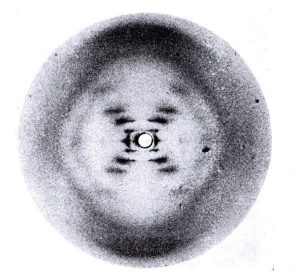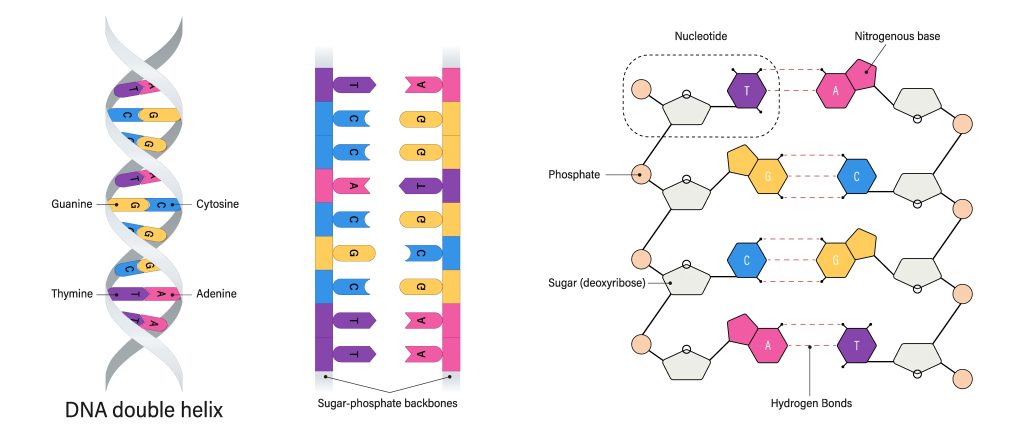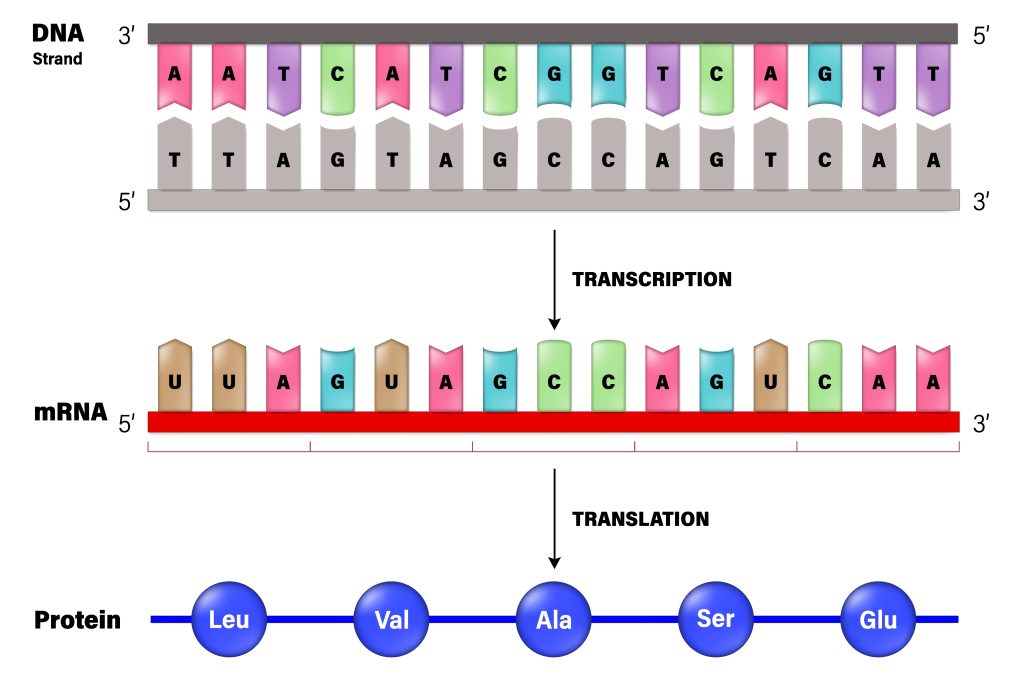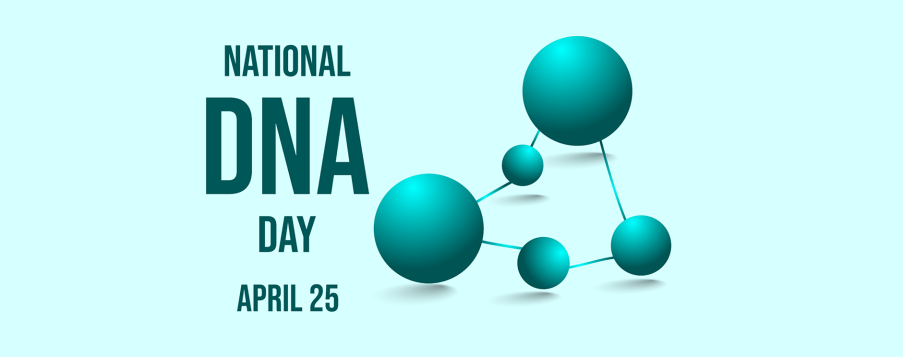26/04/2024
Each year on 25th April, the anniversary of the publication of Watson and Cricks’ A structure of Deoxyribose nucleic acid, National DNA Day commemorates the discovery of the structure of DNA in 1953 and the completion of the Human Genome Project in 2003 – two major milestones in our understanding of the book of life – the human genome.
National DNA Day is an opportunity to celebrate these turning points in the history of science, discuss modern innovations in genetics and consider the future of the field. DNA, short for deoxyribonucleic acid, encodes all the information needed for the development and functioning of an organism. Advances in genetic testing have propelled us into an era where we can unveil profound insights into individual health profiles. From assessing cancer and cardiac risk to deciphering personalised nutrition and lifestyle recommendations, DNA testing now offers unprecedented clarity and guidance. In this article, we’ll look at the breakthroughs mentioned above and why they were so important, before turning to some of the latest developments in the field.
The Structure of DNA
Early advances, such as Friedrich Miescher’s identification of nuclein in 1869 and Gregor Mendel’s formulation of Mendelian genetics and inheritance in 1866, laid the groundwork for understanding DNA. In 1902, Sir Archibald Edward Garrod associated Mendel’s theories with a human disease, marking a crucial step in genetics. Erwin Chargaff’s discovery in 1950 of DNA’s species-specific composition further advanced DNA research.
1952 - Rosalind Franklin photographs crystallised DNA fibres.
Rosalind Franklin, a pioneering scientist, conducted crucial research on the structure of DNA in the 1950s, despite facing gender barriers in academia.
Employing X-ray diffraction techniques, Franklin produced high-resolution photographs of crystallized DNA fibres, most famously Photo 51, revealing valuable insights into its structure. Despite her significant contributions, Franklin was not credited with the discovery of DNA’s structure, which was ultimately achieved by Watson and Crick.

1953 - James Watson & Francis Crick discover the double helix structure of DNA
In 1953, James Watson and Francis Crick made a groundbreaking discovery at Cambridge University, uncovering the double helix structure of DNA. Their collaboration at Cavendish Laboratory, utilising available X-ray data and model building, led to the publication of their seminal paper in Nature in April 1953.
Despite Rosalind Franklin’s photographs being instrumental to their breakthrough, her contribution was not recognised at all for over a decade. After her untimely death due to ovarian cancer in 1958, Watson, Crick and Maurice Wilkins were awarded a Nobel prize in 1962.
Due to the prize’s limitation of only three recipients and the now abandoned rule against posthumous awards, Franklin didn’t get her laurels until she was albeit unflatteringly recognised in James Watson’s autobiography, The Double Helix, in 1968.
THE DOUBLE HELIX.
DNA is a molecule made up of 2 complementary strands that carry genetic information. These 2 strands spiral around each other to resemble a twisted ladder, a structure known as a double helix.
Each strand has a backbone of alternating sugar, specifically deoxyribose, and phosphate groups. Attached to each sugar is 1 of 4 bases, or nucleotides: adenine (A), thymine (T), cytosine (C), and guanine (G). The bases on one strand form bonds with the bases on the other, holding the strands together – A’s always bind with T’s and C’s always bind with G’s. The sequence of bases is read through a series of complex interactions and provides instructions for the assembly of proteins.
This 4-letter code is like the digital binary code we’re familiar with from computers. Computers use bits, 0’s and 1’s, to encode information. DNA has 4 bits – the bases. When you think about the vast amounts of information we can store with a binary code (2 bits), it becomes clear how so much information is stored in DNA. However, this also means there is an awful lot of complex information to unravel.

The Human Genome Project.
The Human Genome Project was an international scientific research initiative that aimed to map and sequence the entire human genome – the complete set of genetic material present in a human cell. This project involved scientists from around the world collaborating to identify and sequence the approximately 3 billion base pairs of DNA that make up the human genome.
The project involved efforts to develop new technologies for genome sequencing and analysis. This included the creation of advanced laboratory techniques, computational tools, and bioinformatics resources to handle and interpret vast amounts of genetic data. The Human Genome Project was a monumental undertaking, representing a significant investment of time, resources, and collaboration from the global scientific community.
Ultimately, the completion of the Human Genome Project in 2003 provided a comprehensive reference map of the human genome, serving as a foundation for subsequent research into genetics, genomics, and personalised medicine. It has led to numerous discoveries, such as identifying genes associated with diseases, understanding human evolutionary history, and advancing diagnostic and therapeutic approaches.
What is the genome?

Contemporary Innovations
Modern genetic testing represents a significant innovation in our understanding of DNA and its role in health and disease. Genetic testing, notably through next-generation sequencing (NGS), has transformed healthcare by rapidly and affordably sequencing the genome, vastly enhancing our ability to detect disease-associated genetic variations.
Coupled with advancements in bioinformatics, genetic testing interprets complex genetic data, providing clinically relevant insights. Widely used in clinical practice, genetic testing can diagnose genetic diseases, predict risk, and screen for genetic predispositions. This approach can support precision medicine by tailoring therapies to individual genetic profiles, ensuring more effective and personalised treatments with fewer side effects.
nutrigenomics
As humans, 99.9% of our DNA is the same as the rest of the species. That means all the individuality we see in people is contained in a tiny portion of our genome. This individuality isn’t just evident in our hair and eye colour but extends to the inner workings of our bodies. Variations in our DNA mean we each absorb, metabolise, and transport nutrients differently.
This can be the result of differences in the genetic code but can also be affected by lifestyle factors which influence whether a gene is expressed or not, in other words, if the gene is turned on or off. For example, what we eat can affect the expression of genes which in turn can alter your risk of developing certain diseases or conditions. In contrast, if you harbour a genetic predisposition to a disease, your risk may be partially mitigated by making heathy lifestyle and diet choices.
Nutrigenomics is the study of the relationship between nutrients, diet, and gene expression, with aims of helping prevent disease and improve health. Nutrigenomics relies heavily on recent advancements in technology, like those developed through the Human Genome Project, enabling the processing of vast amounts of data concerning gene variants.

Nutrition & Lifestyle DNA
At Randox Health, we believe in the promise of genetic testing to help improve global health and prevent disease. Therefore, we have developed our Nutrition and Lifestyle DNA package which tests for variations in your genetic code that influence your response to nutrition, exercise, and other lifestyle factors, as well as your predisposition to certain nutritional diseases. It’s important to remember that possessing a risk variant doesn’t guarantee disease development; it simply implies a heightened risk.
The Nutrition and Lifestyle DNA package includes testing for common deficiencies, like Vitamin D and B12; intolerances, such as lactose and gluten intolerance; your risk of a range of diseases associated with genetics and nutrition, including type 2 diabetes and cardiovascular disease; aspects of your athletic performance such as muscle mass, composition, and recovery; and more, including caffeine metabolism and your risk of musculoskeletal injuries.
To find out more about the Nutrition and Lifestyle DNA package, or to book yours, visit our website here or read our World Health Day blog here to delve into nutrigenomics even further.
We hope that this article has given you an insight into what DNA is and the practical applications of our current understanding of this captivating molecule of life. The future of precision medicine is bright; As we continue to learn more about our genome and the processes at play, we open the way for novel diagnostics, like the Nutrition and Lifestyle DNA test, as well as new and more effective therapies for some of the most complicated conditions faced in medicine.



